
Overview
Fat loss is hard work. Despite being a simple formula on paper, the overwhelming amount of false information out there makes it seem like there should be some magic shortcut to fat loss. Unfortunately, there isn't. To reach your fat-loss goals, you'll need to make some changes that may be uncomfortable or difficult at first. But the good news is that you don't need to be miserable! In addition to regular workouts and proper nutrition, here are three very specific things you can do now to hack your diet and training for more enjoyable (and more successful) fat loss.

1. Delay (But Don’t Skip) Breakfast
People are social creatures, and a big piece of our social fabric is food. But whether it's a work dinner or a date with your significant other, intermittent fasting gives you the flexibility to enjoy eating while still losing fat.
So start with this: Push back breakfast three to four hours after waking every day. So if you typically eat dinner at 6:30 p.m., you'll have breakfast between 10:30 and 11:30 the next morning (assuming you wake up around 6 or 7 a.m.), resulting in a roughly 16-hour fast. There are a few types of fasts, but anywhere from 14 to 18 hours seems to work best for most people. This type of intermittent fasting has a ton of fat-burning benefits.
Read more: The Top 3 Fat-Loss Mistakes

Benefit #1: Increased Growth Hormone Release
The first major benefit of intermittent fasting is an increase in growth hormone release. But human growth hormone isn't just the stuff some athletes use to enhance performance and training, it's a vital fat-burning, muscle-building and youth-restoring hormone. Your levels are highest when you're sleeping and decrease when you wake up. Eating first thing in the morning also causes your growth hormone levels to plummet, so delaying breakfast a few hours helps stave off some of the decline.

Benefit #2: Better Insulin Control
Even if you don't have diabetes, you should still be aware of your insulin level fluctuations. Insulin controls how well your body stores and uses fuel, namely carbs. But carb-rich foods aren't the only culprits to spike insulin levels — all foods have an insulin response. By dialing back the frequency of your meals, you'll decrease the number of spikes daily and gain better control of your insulin. Over time, this improves insulin sensitivity, decreasing the risk of diabetes and helping you store more fuel for muscle and less for fat.
Read more: 13 DOs and DON'TS of Intermittent Fasting

Benefit #3: Less Time to Eat
At the most basic level, you need to burn more calories than you're consuming to lose body fat. By pushing breakfast back from 6 a.m. to 10 a.m., you'll have a shorter time frame in which to eat. For most people, this shorter eating window is enough to jump-start fat loss simply because they have less time and consume fewer calories. Just make sure you're not creating an unhealthy cycle of binging and fasting.

Benefit #4: More Dietary Flexibility
Pushing breakfast back gives you the ability to have larger, more satiating meals. So if you're eating 2,000 calories a day, but push your first meal back, you're allowed to eat greater portions throughout the day (two to three meals as opposed to four to six).
Read more: Could Intermittent Fasting Solve Your Weight-Loss Plateau?
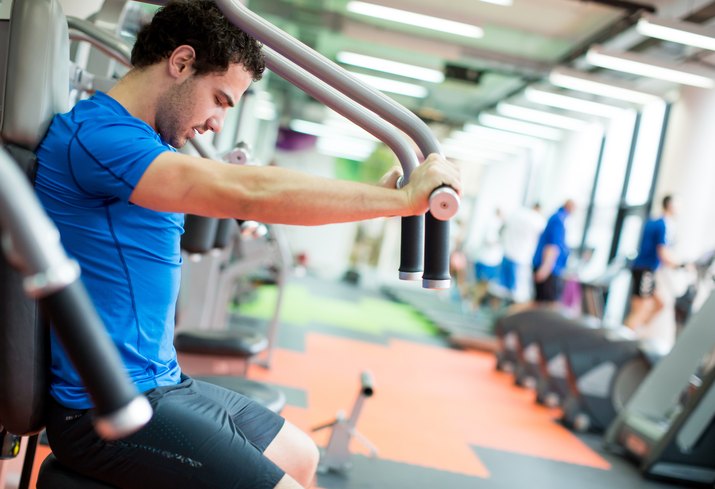
2. Hit the Gym More Often
Momentum is a powerful thing. Making smart choices and successful progress builds positive momentum and makes it easier to stay the course. So when you hit your stride at the gym, keep it up! Performing more frequent workouts provides a constant reminder of your fat-loss goal. And total-body workouts stimulate a greater amount of muscle more often, which, if the intensity is high enough, also makes them more demanding on your cardiovascular system.
Instead of three 90-minute workouts a week, try five 45-minute total-body strength-training sessions. Time permitting, add in two to three low-intensity cardio sessions like walking or biking.

2. Hit the Gym More Often (Continued)
For an even greater jolt to your fat-loss systems, start your day with a good sweat session. This reinforces your objective and gives you daily positive reinforcement. It also sets a positive tone for each day, helping you shed fat and build lean muscle faster.
Instead of hitting snooze and rolling over, force yourself out of bed and do the following workout:
- 10 push-ups
- 10 squats
- 30-second plank
- 10 split squats per leg
- Perform all exercises in succession without rest. Rest 60 seconds, then immediately repeat.
Read more: How to Use Rest Periods to Maximize Your Fat Loss
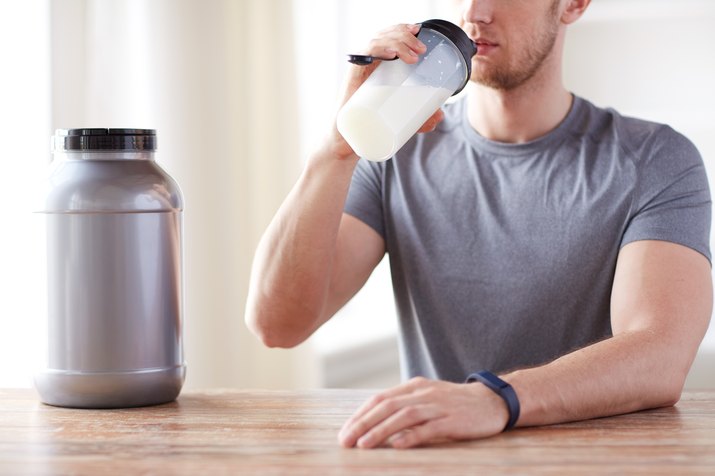
3. Have a Protein Shake Before Big Meals
It's no secret that Americans tend to overeat, especially at dinners and social events. Oversized utensils allow us to shovel more grub onto our oversize plates — and that leads to more people with oversize waistlines. Portion control is no easy task, so it's best to use strategies to get a head start on controlling our hunger signals. The solution is threefold: total calories, protein and timing.
To figure out how many calories you need per day, take your body weight in pounds and multiply it by 12 to 14 (if you've been moderately active). On workout days use 14 for your calculations. Use 12 on non-workout days. Note: If your energy is too low using these guidelines, increase your daily calories by 200 to 300.
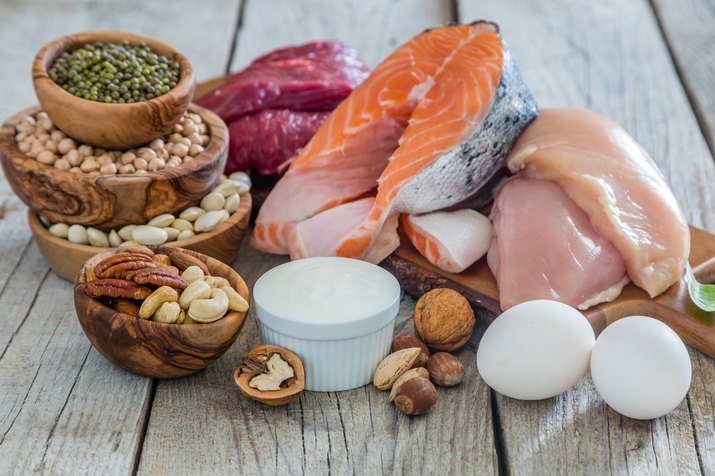
Protein Timing and Portion Control
Calories are still king when it comes to losing weight, but there are other tricks you can use to control caloric intake while still eating enough to support training. To speed up fat loss, drink a protein shake 20 minutes before dinner and/or other big meals for three reasons.
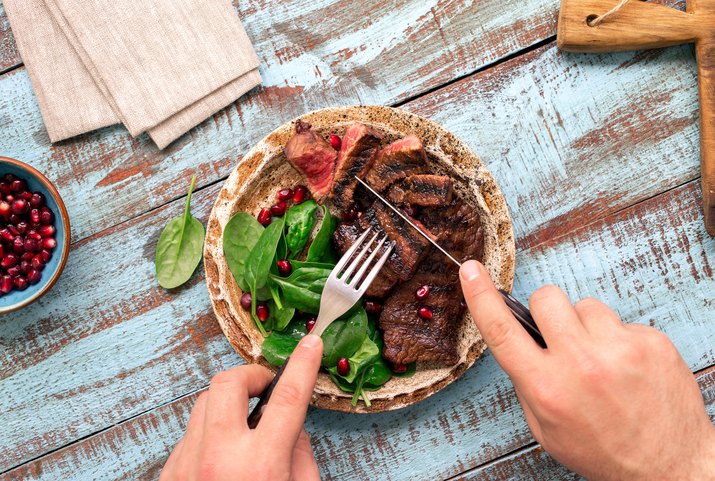
Reason #1: Protein has the highest thermic effect of any food.
This means it takes more energy to break down proteins into amino acids than fats into fatty acids or carbohydrates into glucose. Most people, especially women, come up short on their protein intake, which should be roughly one gram per pound of body weight.
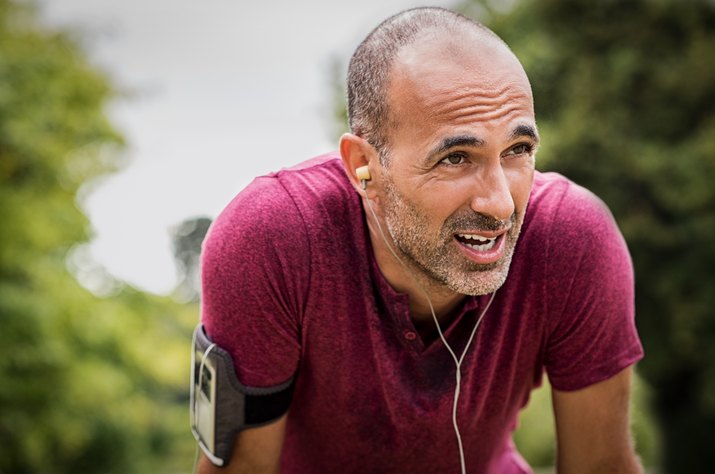
Reason #2: Protein stimulates better recovery from exercise.
Having a shake before dinner will not only help you eat fewer unhealthy calories during your meal but will help you hit your protein goal for the day and help fuel your muscles for your workout. Consuming protein improves your ability to build lean muscle during your workouts, which then can improve resting metabolic rate.

Reason #3: It gives your body time to figure out it's full.
It takes approximately 20 minutes for satiation signals to go from your stomach to your brain. By consuming a protein shake of 20 to 40 grams of protein 20 minutes before a meal, you're filling up on what you need (protein), while decreasing the likelihood of overeating.
Read more: The 7 Principles of Fat Loss

What Do YOU Think?
Is one of your current goals to lose fat? Are you doing any of these three things yet? What are you doing to help reach your fat-loss goals? Did any of these tips surprise you? Do you think you're going to implement them in your regimen? Share your thoughts and questions in the comments section below!
Video of the Day
Video of the Day